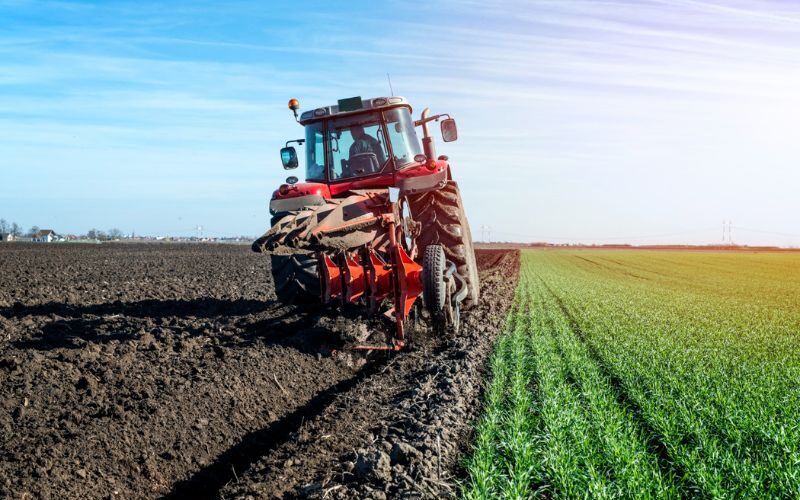Warning: Undefined array key "titleWrapper" in /home4/adhunsh2/public_html/wp-content/plugins/seo-by-rank-math/includes/modules/schema/blocks/toc/class-block-toc.php on line 103
Warning: Undefined array key "titleWrapper" in /home4/adhunsh2/public_html/wp-content/plugins/seo-by-rank-math/includes/modules/schema/blocks/toc/class-block-toc.php on line 103
Few strands are as fundamental to the enormous tapestry of human civilization as agriculture. Agriculture meaning is more than just a means of subsistence; Adhunik Crop Care Products represents a deep relationship between humans and the environment and is woven into the very fabric of our existence. Agriculture is the art of nourishing life itself, not just the production of food or the rearing of animals.
Origins and Evolution
Agriculture dates back to the beginning of human history when our predecessors moved from hunter-gatherer societies that were nomadic to permanent agricultural communities. With this significant change, a new era began as people discovered how to use the land’s fertility for their own needs.
Agriculture was a primitive activity in the beginning, with methods including hand irrigation and slash-and-burn cultivation. But through thousands of years of research, creativity, and trial and error, agriculture developed into a highly developed science. Agronomic knowledge was greatly enhanced by ancient societies including the Sumerians, Egyptians, and Indus Valley tribes, who created sophisticated crop rotation strategies, irrigation systems, and breeding practices.
The Essence of Agriculture
Agriculture is really about a deep synergy between humans and the environment, not only about raising livestock or food. Farmers tend to the land and the land tends to them; it’s a dance of reciprocity. From the antiquated methods of subsistence farming to contemporary agroecological concepts, this symbiotic link is built into the very fabric of agricultural activities.
Furthermore, agriculture meaning includes a wide range of human endeavors, such as gardening, aquaculture, forestry, and animal husbandry, in addition to the production of food. Every aspect of agriculture is vital to the continuation of life on Earth, from supplying raw materials and nutrition to maintaining ecosystem health and biodiversity.
Challenges and Innovations
In the modern world, agriculture has several difficulties despite its immense importance. The basic underpinnings of agricultural sustainability are under threat from factors such as biodiversity loss, water scarcity, climate change, and degraded soil. Furthermore, the world’s food systems are under increasing strain due to population expansion, urbanization, and shifting eating habits, which exacerbates the problems of food insecurity and inequality.
Farmers, scientists, and legislators are developing ground-breaking, creative solutions to address these issues and improve agriculture’s sustainability, resilience, and equity. An array of technologies and methods, ranging from genetic engineering and vertical farming to precision farming and agroforestry, are being utilized to improve output, preserve resources, and lessen emissions into the environment.
The Future of Agriculture
At the dawn of the twenty-first century, agriculture’s future is both bright and uncertain. Technological developments in biotechnology, artificial intelligence, and renewable energy present previously unheard-of chances to transform farming methods and tackle urgent worldwide issues. These inventions must, however, be used carefully, keeping in mind social, ethical, and environmental factors.
Furthermore, changes in economic systems, governance structures, and consumption patterns are only a few of the broader societal developments that are inextricably related to the future of agriculture. Agriculture will be crucial in determining our common future as we work to create a more just and sustainable world.
Farm Equipment India
The importance of farm equipment in India’s enormous agricultural region cannot be emphasized. Agronomic machinery has transformed farming methods throughout several regions, including the Western Ghats and Punjab’s fertile plains. This has led to increased productivity, efficiency, and sustainability. India’s agricultural inventiveness and tenacity are demonstrated by the country’s agricultural equipment travels.

Traditional Practices and Challenges
Indian agriculture was based on traditional methods that were passed down through the generations for many years. Fields were plowed by oxen, the soil was tilled by hand tools, and crops were collected by hand in the sweltering sun. Although these techniques maintained livelihoods, they were frequently time-consuming, labor-intensive, and had a small scope.
Small landholdings, dispersed markets, and poor infrastructure all presented significant obstacles to the growth of the agricultural sector. Farmers found it difficult to obtain loans, extension services, and contemporary inputs, which made it difficult for them to adopt automated technologies.
The Green Revolution and Technological Leap
An important turning point in India’s agricultural history was the Green Revolution of the 1960s, which ushered in a period of increased productivity and wealth. India became self-sufficient in food production thanks to the introduction of chemical fertilizers, irrigation infrastructure, and high-yielding crop types that changed the agricultural landscape.
In addition to these developments, Farm equipment india was essential in raising agricultural scale and efficiency. Bullocks were superseded by tractors, irrigation pumps were driven by diesel engines and grain processing was mechanized by threshers, all of which reduced labor needs and increased yields.
Adoption and Adaptation
Despite the potential benefits of mechanization, there were obstacles to India’s adoption of farm equipment. For smallholder farmers, who make up the bulk of India’s agricultural workforce, obstacles included high starting expenses, restricted access to credit, and complicated technology.
In response, efforts were made by the government, the commercial sector, and non-governmental organizations to encourage smallholders to purchase farm equipment. To make machinery more widely available and reasonably priced, loan programs, extension services, and subsidies were implemented. In addition, farmers were introduced to contemporary technologies through training programs and demonstration plots.
Diversification and Specialization
The requirement for specialized farm equipment to satisfy the demands of various cropping systems and agroclimatic zones increased along with India’s agricultural landscape. Numerous pieces of equipment have been developed to maximize productivity and resource use, ranging from laser land levelers and precision seeders to rice transplanters and sugarcane harvesters.
Furthermore, new prospects for mechanization and customization have been made possible by the growth of agribusinesses, farmer-producer organizations (FPOs), and contract farming. Smallholders can utilize shared machinery through collaborative approaches, combining resources and knowledge to increase profitability and productivity.
Innovation and Sustainability
In India, conservation-focused methods and sustainable agriculture have gained prominence in the last several years. In response to this trend, Farm Equipment India is creating environmentally friendly products including organic fertilizer applicators, solar-powered pumps, and zero-till seeders.
The design, operation, and maintenance of farm equipment are also changing as a result of digitization and data-driven decision-making. Farmers may optimize inputs, cut waste, and improve environmental stewardship with the use of smart sensors, GPS guiding systems, and remote monitoring platforms.
Challenges and Opportunities Ahead
Although Adhunik care products have come a long way in India, there are still many obstacles to overcome. Traditional farming practices and livelihoods are in danger of being disrupted by rapid urbanization, declining land availability, and climate change.
Furthermore, the COVID-19 epidemic has shown weak points in India’s agricultural supply systems, emphasizing the necessity of adaptability and resilience. To guarantee the agricultural equipment industry’s sustained expansion and viability, investments in R&D, infrastructure, and market connections are necessary.
Double Crop Yield Enhancer
Crop yield doubling has become critical in a world facing issues with food security and the need for sustainable farming. Creative solutions are needed to minimize the environmental impact of meeting the demands of an expanding population. The idea of “double crop yield enhancers”—technologies, methods, and procedures meant to dramatically raise agricultural productivity per unit of land—is one such option that is gaining support. Let’s investigate this fascinating field and see how Double crop yield enhancer might affect farming in the future.
Understanding Double Crop Yield Enhancers
Double crop yield enhancers are a broad category of interventions intended to improve different elements of crop production, such as insect control, water use, and soil health and nutrient management. These enhancers can be scientific advancements like genetically modified organisms (GMOs) and formulations based on nanotechnology, or Double crop yield enhancer can be agronomic techniques like precision farming and intercropping.
Fundamentally, these enhancers aim to tackle the primary limiting constraints that impede agricultural yields, including insufficient nutrients, limited water resources, insect and disease pressure, and unfavorable environmental circumstances. Double crop yield enhancer seek to realize the full potential of agricultural systems by utilizing state-of-the-art science and technology, allowing farmers to attain larger yields sustainably.
Key Strategies and Technologies
To increase crop yields, several tactics and technologies are being investigated and implemented, including:
Precision Agriculture: By utilizing GPS, data analytics, and remote sensing, farmers may customize inputs like water, fertilizer, and pesticides to meet the unique requirements of their crops. With less waste and more efficiency, this focused strategy eventually produces larger yields.
Biotechnology and Genetic Engineering: Progress in biotechnology has resulted in the creation of genetically engineered crops that possess improved characteristics like resilience against pests and illnesses, ability to withstand drought and salt, and enhanced absorption of nutrients. With less need for chemical inputs, these genetically modified crops could result in yield increases of note.
Soil Health Management: By increasing nutrient availability, water retention, and microbial activity in the soil, techniques including crop rotation, cover crops, and organic amendments can support higher yields and increased resistance to environmental stress.
Water-saving Technologies: As water becomes more scarce, farmers can maximize water usage and reduce waste by utilizing technologies like moisture sensors, drip irrigation, and rainwater collection, which improves yields and promotes sustainability.
Biopesticides and Integrated Pest Management (IPM): Biopesticides generated from natural sources provide efficient and eco-friendly pest control solutions, helping us move away from our dependence on synthetic pesticides. They can assist in controlling pest populations while protecting beneficial insects and reducing ecological damage when used with IPM techniques like crop rotation and biological control.
Challenges and Considerations
Double crop yield enhancers have significant promise, but there are several obstacles and factors to take into account before they are widely used:
Cost and Accessibility: Smallholder farmers with limited finances and credit access may find it difficult to implement many of these technologies and practices because they may need large upfront investments in infrastructure, equipment, and training.
Regulatory Obstacles: Public opinions about safety, ethics, and the effects on the environment, as well as regulatory frameworks, may prevent the widespread acceptance of genetically modified crops and some biotechnological solutions.
Knowledge and Extension Services: To guarantee that farmers are aware of and prepared to implement these enhancements, effective information and extension service dissemination is essential. To promote technology transfer and adoption, funding for extension, training, and education initiatives is crucial.
Environmental and Social Impacts: Double crop yield enhancers have the potential to boost output and lessen environmental impact, but their wider effects on biodiversity, soil health, water quality, and social equity need to be carefully considered.
Conclusion
In summary, the goal of doubling agricultural yields through creative enhancers is a complex process that requires striking a balance between socioeconomic, environmental, and technical improvements. The advantages of food security and ecological stewardship outweigh the difficulties with accessibility, regulations, and sustainability. Adhunik Care Products can create the foundation for a resilient, sustainable agricultural future that satisfies the requirements of both the present and the future through inclusive, conscientious adoption.





 Locate Us
Locate Us